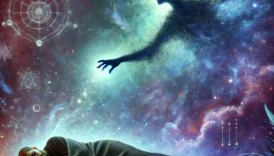Jung’s Dream Analysis: Exploring the Collective Unconscious and Archetypes
Dreams have fascinated humanity for centuries, serving as a window into the mind’s mysteries and a gateway to self-discovery. Carl Gustav Jung, one of the most influential figures in psychology, redefined how we understand dreams. Unlike his predecessor Sigmund Freud, who focused on individual unconscious desires, Jung introduced the idea that dreams connect us to a collective unconscious shared by all humanity.
- Jung’s Dream Analysis: Exploring the Collective Unconscious and Archetypes
- Carl Gustav Jung: A Pioneer in Depth Psychology
- Who Was Carl Jung?
- The Function of Dreams in Jungian Psychology
- Why Are Dreams Important?
- The Collective Unconscious: Jung’s Central Concept
- What Is the Collective Unconscious?
- Archetypes and Their Role in Dreams
- What Are Archetypes?
- Key Archetypes in Jung’s Theory
- Jung’s Approach to Dream Analysis
- 1. Understanding the Dream’s Context
- 2. Decoding Symbolism
- 3. Identifying Archetypes
- 4. Balancing the Individual and the Universal
- Jungian Dream Analysis and Spiritual Perspectives
- Shared Insights:
- Critiques of Jung’s Dream Analysis
- Strengths:
- Weaknesses:
- Jung’s Legacy in Dream Analysis
- Conclusion: Jung’s Vision of Dreams
- Sources
This article delves into Jung’s dream analysis, exploring key concepts such as the collective unconscious, archetypes, and how dreams serve as a tool for personal and spiritual growth. By bridging Jungian theory with practical insights, we aim to uncover the universal and individual meanings behind our dreams.
Carl Gustav Jung: A Pioneer in Depth Psychology
Who Was Carl Jung?
Carl Gustav Jung (1875–1961) was a Swiss psychiatrist and psychoanalyst who initially collaborated with Sigmund Freud. However, Jung’s theories soon diverged from Freud’s, as he sought to explore the deeper, symbolic connections shared by all humanity. His revolutionary ideas, particularly the concepts of the collective unconscious and archetypes, have left an enduring legacy in psychology.
Jung viewed dreams as a means of communication between the conscious mind and the unconscious. To him, dreams were not merely random images but profound messages that could guide individuals toward self-realization and psychological wholeness.
Source: Jung, C. G. (1968). Man and His Symbols. New York: Dell Publishing.
The Function of Dreams in Jungian Psychology
Why Are Dreams Important?
Jung believed that dreams serve two primary purposes:
- Revealing the Unconscious: Dreams bring to light aspects of the unconscious mind that are often ignored or repressed in waking life.
- Fostering Integration: They guide individuals toward individuation—a process of self-discovery and personal growth that unites the conscious and unconscious aspects of the psyche.
Dreams, according to Jung, act as a mirror, reflecting inner conflicts, aspirations, and potential pathways for growth.
The Collective Unconscious: Jung’s Central Concept
What Is the Collective Unconscious?
The collective unconscious is a universal layer of the unconscious mind, shared by all humans. It contains memories, instincts, and experiences inherited from our ancestors. Jung argued that this layer operates independently of personal experiences, providing access to a vast reservoir of archetypes and universal symbols.
For Jung, the collective unconscious is the foundation of all myths, religions, and cultural narratives, as it connects humanity to a shared psychological heritage.
Archetypes and Their Role in Dreams
What Are Archetypes?
Archetypes are recurring symbols or motifs that represent universal patterns of human behavior and experience. Jung identified these archetypes as the building blocks of the collective unconscious, appearing in dreams, myths, and cultural stories across time and space.
Key Archetypes in Jung’s Theory
- The Shadow: Represents the darker, repressed aspects of the self. Encountering the shadow in a dream often signifies a need to confront unresolved fears or weaknesses.
- Anima and Animus: Reflect the inner feminine side in men (anima) and the inner masculine side in women (animus), symbolizing balance and integration.
- The Hero: Embodies the journey of overcoming challenges and achieving self-discovery.
- The Wise Old Man/Woman: A figure of guidance and wisdom, often appearing when one seeks insight or direction.
- The Self: Represents the totality of the psyche and the ultimate goal of individuation—achieving harmony between the conscious and unconscious mind.
Jung’s Approach to Dream Analysis
Jung’s method for interpreting dreams is holistic, considering the dreamer’s personal experiences, cultural context, and the universal symbols embedded in the dream. Below are the key steps in Jungian dream analysis:
1. Understanding the Dream’s Context
Jung emphasized that dreams cannot be interpreted in isolation. They must be analyzed within the context of the dreamer’s life circumstances, emotions, and psychological state.
2. Decoding Symbolism
Dream symbols are rarely literal. Instead, they use metaphorical language to convey the unconscious mind’s messages. For example:
- Water: Often symbolizes emotions or the unconscious mind itself.
- Snakes: Represent transformation, fear, or healing, depending on the context.
3. Identifying Archetypes
Recognizing archetypes within a dream helps uncover universal themes that transcend individual experiences. For instance, a recurring dream of a heroic journey may indicate a personal struggle toward growth and self-discovery.
4. Balancing the Individual and the Universal
Jung stressed that dreams contain both personal and collective elements. Interpreting dreams requires a balance of understanding the dreamer’s unique life experiences and connecting them to universal archetypal themes.
Source: Jung, C. G. (1971). Psychological Types. Princeton: Princeton University Press.
Jungian Dream Analysis and Spiritual Perspectives
Jung’s ideas resonate with various spiritual traditions, including those that view dreams as divine messages. In Islamic dream interpretation, for example, dreams are categorized as:
- True Dreams (Ru’ya): Messages or guidance from God.
- False Dreams: Disturbances caused by external or internal anxieties.
Both Jungian and Islamic approaches recognize dreams as a bridge between the seen and unseen, offering guidance for personal and spiritual growth.
Shared Insights:
- Symbolism: Both perspectives emphasize the importance of interpreting dream symbols.
- Guidance: Dreams are seen as tools for understanding one’s path in life.
- Transformation: They highlight dreams as catalysts for change and self-awareness.
Critiques of Jung’s Dream Analysis
Strengths:
- Holistic Approach: Jung’s theory integrates psychology, mythology, and spirituality, making it highly versatile.
- Depth: His focus on the collective unconscious provides profound insights into universal human experiences.
Weaknesses:
- Subjectivity: Critics argue that Jung’s interpretations can be overly abstract or speculative.
- Scientific Basis: Some aspects of his theories lack empirical evidence, leading to debates within the scientific community.
Jung’s Legacy in Dream Analysis
Jung’s work on dreams has had a lasting impact, influencing not only psychology but also art, literature, and philosophy. His emphasis on the symbolic and transformative power of dreams continues to inspire those seeking to understand themselves and their place in the world.
Conclusion: Jung’s Vision of Dreams
Carl Jung viewed dreams as profound tools for self-discovery, bridging the gap between the conscious and unconscious mind. By exploring archetypes and the collective unconscious, Jungian dream analysis offers a roadmap to understanding our inner world and achieving personal growth.
Whether viewed through the lens of psychology or spirituality, dreams remain a rich, symbolic language that invites us to explore the depths of our psyche. By engaging with our dreams, we embark on a journey of transformation, guided by the timeless wisdom of Jung’s insights.
Sources
- Jung, C. G. (1968). Man and His Symbols. New York: Dell Publishing.
- Jung, C. G. (1971). Psychological Types. Princeton: Princeton University Press.
- Ibn Sirin. Kitab al-Ta’bir. (Islamic Dream Interpretation).
- Modern psychological and Islamic dream studies.
This article bridges Jungian and spiritual perspectives, encouraging readers to embrace the wisdom hidden within their dreams. Explore your dreams and uncover the universal truths that unite us all.





